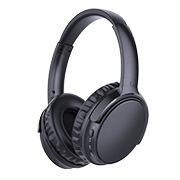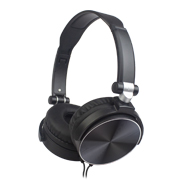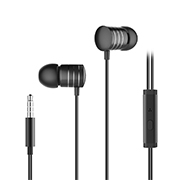
- factory address
D Building,Pioneer Park,3rd Industrial Zone Fenghuang Village, Fuyong Town,Baoan DistrictShenzhen,Guangdong,China
How to identify sound quality professionally?
First: sound quality
Sound quality refers to the quality of sound, which many people confuse with "timbre".What is the quality of sound?When you say a pair of shoes is of good quality.You must mean well-fitting, comfortable, and durable, not that it is attractively drawn and occasionally sideburns.Similarly, when you are talking about a sound quality of audio headphone equipment, when you are not talking about its level, positioning such as can, but specifically refers to the equipment "not resistant to hearing"!It's like wearing well or not fitting.A good sound quality equipment, it is external performance is comfortable, listen to.You don't have to explore the reasons why it sounds comfortable and pleasant to listen to, that's for the experts, you just have to use your ears to judge.Some devices are powerful, fast and analytical, but they don't last long.A good sound equipment, its sound quality should resemble a pair of good voice, let a person 100 hear not be bored with.Maybe I still think it's very abstract.Actually, it doesn't. I can do it with a real column.When you talk about cloth, you will say: this material is of good quality.When you are eating steak, you can say: this steak is of good quality.When you compliment a child, you say: the child has good qualifications.So, when you are listening to an audio device or a musical instrument, you may also say: it has a beautiful sound quality.From the above examples, you can clearly know that "quality" is the innate nature.The quality of the sound is noble, good and beautiful, which means that the nature of the device is good and it makes people feel comfortable.I can say that sound quality is the most important link in the audio equipment, so I put it in the first place.
Second: timbre
Timbre is the color of sound.In English, TONE QUALITY is not the same thing as TIMBRE or TONE COLOR.But in Chinese, sound quality and timbre are often misused.We often hear that the tone of the violin is really cold, the tone of the violin is really warm, and so on.Sound, like light, is colored, but it is not seen with the eyes, but heard with the ears.Usually, the warmer the tone, the softer the sound;The colder the tone, the harder the sound.Too soft or too hard, of course, is not very good.Sometimes, timbre can also be described by words like "noble" and "beautiful", which is basically one of nature.But, like cloth, there is a fine line between material and colour.In the headphone review, timbre, like colour, refers to its particular colour.The timbre of some equipment slants yellow, some slants white, some slants cold, even you can say it is blue with a little care.In short, audio headphone equipment is just like Musical Instruments, which can hardly be separated from the fact that the more expensive the sound, the better the color.A $2 million violin may have a golden tint;A nt $5,000 violin may sound like a faded painting.Although everyone has different opinions, but "beauty" still has a "consensus", you can not say that a person with an upturned nose is "beauty incarnate";Likewise, you cannot say that a cool blue tone is beautiful.This is our consensus on the beauty of timbre.
The third one is the distribution and control of sense of quantity in high, middle and low frequency bands.
The project is easy to understand, but it's also easy to misunderstand the text.What do you mean?Everyone will say: the speakers have too much treble and too little bass.This is the quantitative sense distribution in high, medium and low frequency bands.The problem is that if the bandwidth from 20Hz to 20KHz is divided into only three segments, there is bound to be an "inexact" confusion.Where exactly does your bass mean?How low?In order to make the description more accurate, it is necessary to subdivide the bandwidth of 20hz-20khz.According to the simple classification method of TAS and Stereophile of the United States, each segment of high, medium and low is further divided into three segments, namely, "lower intermediate frequency, intermediate frequency and higher intermediate frequency".This division is like the law of the twelve equal, fairly regular.However, there are some translation problems for Chinese people, such as "low if frequency". Do we call it "low if frequency" or "low if frequency"?What about the higher low frequencies?"High and low frequency"?The frequency of 20hz-20khz is divided into seven segments: extremely low frequency, low frequency, medium frequency, medium frequency, medium frequency, high frequency, high frequency and extremely high frequency.The nouns in these seven paragraphs are in line with ordinary Chinese people's customary name, and easy to remember, will not be confused.The very low frequencies go from 20Hz to 40Hz and this octave I call the very low frequencies.There are very few instruments in this frequency band. Only the double bass, bass bassoon, tuba, organ, piano and other instruments can reach such a low range.Since this extremely low frequency is not the most beautiful range of an instrument, composers rarely write notes that low.Unless music is a popular synthesizer arrangement, extremely low frequencies are of little use to headphone fans.Some people make the mistake of saying that although the pitch of the instrument is not that low, the overtones can be lower than that.This is not true, because the pitch of the instrument is the lowest pitch, and the pitch is only doubled, tripled, quadrupled, quintupled...And so on up, not down.It is as if you tensed a string, and the full length of the string is the fundamental, half, a third, a quarter, a fifth...Constant chord vibrations are overtones.The sum of the fundamental and overtones is the timbre of the instrument.In other words, violins and flutes have different timbre even if they share the same pitch.



















